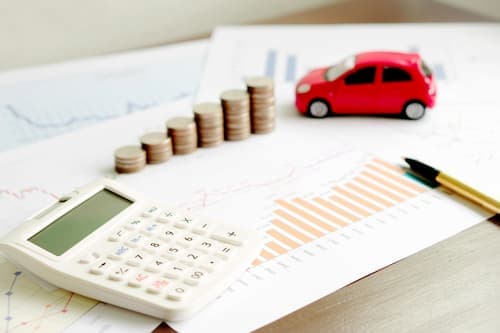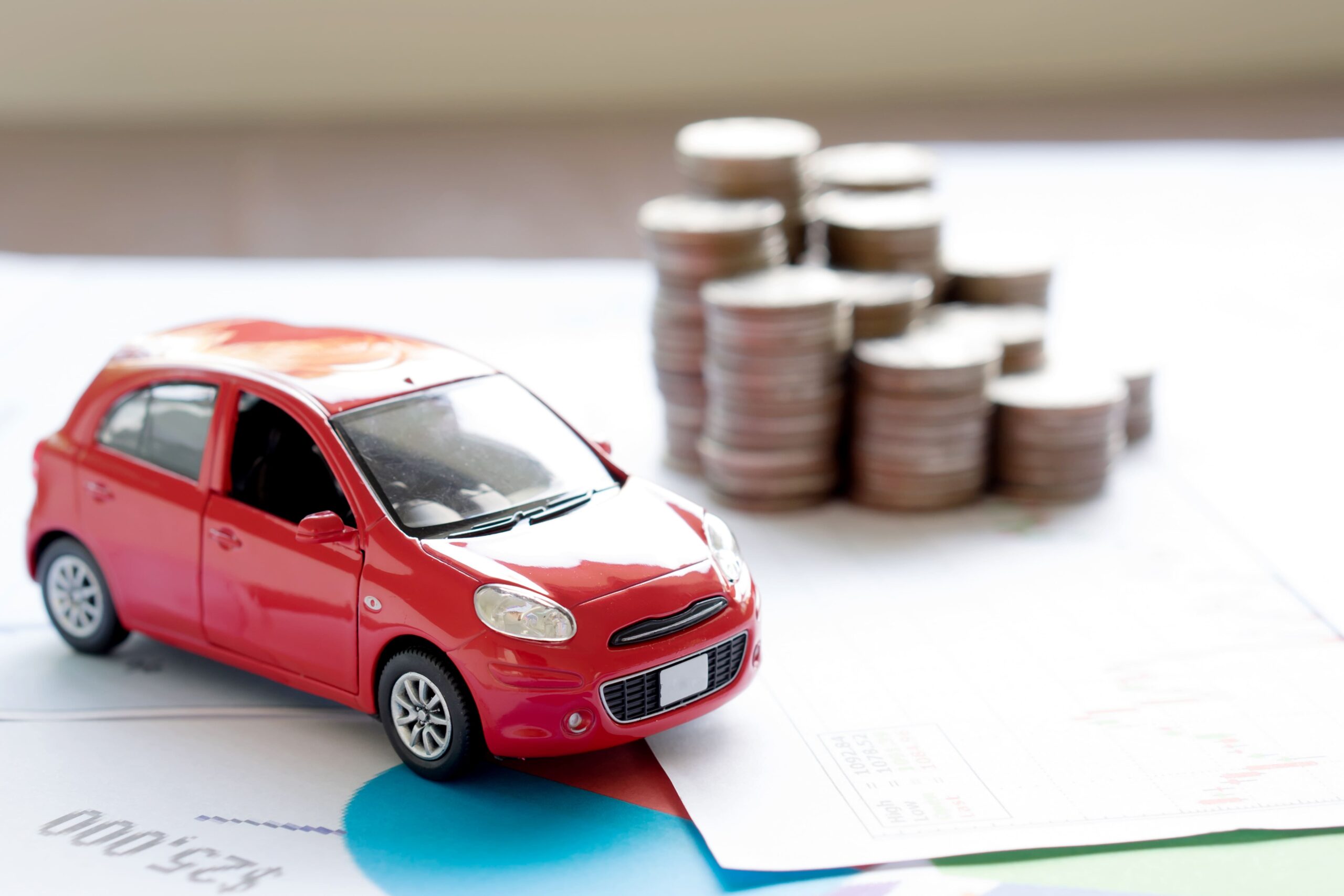- How we calculated the total cost of ownership for a car
- States with the highest cost of car ownership
- States with the lowest cost of car ownership
- State sales tax and car ownership
- Cost of auto insurance
- Driving miles and gas costs
- Maintenance and repair costs
- Additional repair costs related to road conditions
- How to reduce the total cost of ownership for your car
- Final thoughts on the cost of car ownership
How we calculated the total cost of ownership for a car
In order to calculate the total cost of owning a vehicle, we collected five-year car ownership-related numbers from multiple sources and used our most recent data for average auto insurance rates. Our research included:
- Sales tax
- Registration costs
- Gas prices
- Average miles per gallon
- Average number of miles driven by state
- Average annual car maintenance costs (repairs)
- Extra repair costs associated with road conditions
Louisiana is this year’s most expensive state to own and operate a vehicle, leapfrogging past California. The yearly cost of ownership is $8,059, which works out to $30,293 over five years. In second place is California, which was last year’s top state, at $7,480 a year and $28,402 over five years. Third is New Mexico with average annual costs of $7,019 and a five-year cost of $27,095.
New Hampshire is the cheapest state for ownership this year, with an annual cost of $3,362 or $16,812 over five years. It edged out both Oregon ($3,679 a year and $18,396 over five years) and Vermont ($4,931 a year and $18,655 over five years) to grab the top spot.
Here are the top 10 most and least expensive states for car ownership.
States with the highest cost of car ownership
The top 10 most expensive car ownership states over five years:
- Louisiana -- $30,293
- California -- $28,402
- New Mexico -- $27,095
- Florida -- $26,990
- Mississippi -- $26,611
- Missouri -- $26,377
- Colorado -- $26,135
- Michigan -- $25,453
- Arkansas -- $25,397
- South Dakota -- $25,179
States with the lowest cost of car ownership
The 10 cheapest states to own a car over five years:
- New Hampshire -- $16,812
- Oregon -- $18,396
- Vermont -- $18,655
- Maine -- $19,003
- Idaho -- $19,244
- Alaska -- $19,391
- Ohio -- $19,834
- Iowa -- $20,221
- Virginia -- $20,699
- New Jersey -- $20,532
Two of the top five cheapest states (New Hampshire and Oregon) do not have a state sales tax, which lowers the cost of ownership.
Maine, the fourth-cheapest state for car ownership, has the lowest insurance rates, with an average premiumThe payment required for an insurance policy to remain in force. Auto insurance premiums are quoted for either 6-month or annual policy periods. of $1,175 a year. Maine is mostly rural, leading to fewer accidents and claims, and has the second-lowest rate of uninsured drivers, which helps keep insurance costs down.
On the other end of the spectrum is Louisiana, which has the highest insurance rates in the country with an average premium of $2,883. That’s 145% higher than Maine’s average premium. In addition, Louisiana has the highest average combined state and local sales tax rates at 9.56%, pushing up the overall cost of ownership.
The cost of ownership increased this year. Louisiana’s move into the top spot brought with it an increase of $3,809 a year over costs in that state last year. California’s cost increased as well, but by only $1,918, moving it down into second place.
Multiple factors go into the cost of owning a car, and how those metrics influence the total cost varies widely. One state may have expensive car insurance rates but no sales tax or a very low sales tax rate, which helps keep costs down.
Curious where your state falls in our rankings? Here's the complete list of states.
| State | Average cost of car ownership, 5-year period | Rank |
|---|---|---|
| Alabama | $22,203 | 18 |
| Alaska | $16,305 | 50 |
| Arizona | $23,294 | 9 |
| Arkansas | $21,840 | 24 |
| California | $27,168 | 1 |
| Colorado | $22,528 | 14 |
| Connecticut | $22,197 | 19 |
| Delaware | $21,683 | 26 |
| Florida | $25,565 | 3 |
| Georgia | $20,910 | 34 |
| Hawaii | $20,768 | 35 |
| Idaho | $18,373 | 46 |
| Illinois | $20,448 | 36 |
| Indiana | $21,252 | 31 |
| Iowa | $18,762 | 44 |
| Kansas | $21,094 | 32 |
| Kentucky | $22,309 | 17 |
| Louisiana | $26,485 | 2 |
| Maine | $18,992 | 42 |
| Maryland | $20,951 | 33 |
| Massachusetts | $20,060 | 37 |
| Michigan | $23,983 | 7 |
| Minnesota | $21,309 | 29 |
| Mississippi | $22,330 | 16 |
| Missouri | $25,035 | 4 |
| Montana | $21,414 | 27 |
| Nebraska | $22,805 | 11 |
| Nevada | $24,344 | 6 |
| New Hampshire | $17,181 | 48 |
| New Jersey | $22,528 | 13 |
| New Mexico | $23,945 | 8 |
| New York | $22,188 | 20 |
| North Carolina | $20,010 | 38 |
| North Dakota | $21,265 | 30 |
| Ohio | $18,167 | 47 |
| Oklahoma | $22,671 | 12 |
| Oregon | $16,607 | 49 |
| Pennsylvania | $18,705 | 45 |
| Rhode Island | $21,749 | 25 |
| South Carolina | $22,831 | 10 |
| South Dakota | $21,892 | 23 |
| Tennessee | $19,096 | 40 |
| Texas | $22,377 | 15 |
| Utah | $22,129 | 21 |
| Vermont | $19,670 | 39 |
| Virginia | $18,935 | 43 |
| Washington | $21,313 | 28 |
| West Virginia | $21,963 | 22 |
| Wisconsin | $19,038 | 41 |
| Wyoming | $24,361 | 5 |
State sales tax and car ownership
Most states charge sales tax on cars. This can include both a state and local sales tax. According to the Tax Foundation, these five states have the highest average combined state and local sales tax rates:
- Louisiana -- 9.56%
- Tennessee -- 9.55%
- Arkansas -- 9.45%
- Washington – 9.38%
- Alabama -- 9.29%
The states with the lowest average combined rates are
- Alaska – 1.82%
- Hawaii -- 4.50%
- Wyoming -- 5.44%
- Maine -- 5.50%
- Wisconsin -- 5.70%
The data shows that state sales tax can significantly impact ownership costs. Currently, five states don't have any state sales tax, and most are among the 10 lowest cost-of-ownership states.
Here’s the average amount of sales tax paid in each state on a $25,000 vehicle:
| State | Average sales tax paid on a $25,000 car |
|---|---|
| Alabama | $2,312 |
| Alaska | $440 |
| Arizona | $2,092 |
| Arkansas | $2,364 |
| California | $2,206 |
| Colorado | $1,946 |
| Connecticut | $1,588 |
| Delaware | $0 |
| Florida | $1,756 |
| Georgia | $1,851 |
| Hawaii | $1,111 |
| Idaho | $1,506 |
| Illinois | $2,205 |
| Indiana | $1,750 |
| Iowa | $1,736 |
| Kansas | $2,164 |
| Kentucky | $1,500 |
| Louisiana | $2,388 |
| Maine | $1,375 |
| Maryland | $1,500 |
| Massachusetts | $1,563 |
| Michigan | $1,500 |
| Minnesota | $1,872 |
| Mississippi | $1,767 |
| Missouri | $2,083 |
| Montana | $0 |
| Nebraska | $1,737 |
| Nevada | $2,057 |
| New Hampshire | $0 |
| New Jersey | $1,650 |
| New Mexico | $1,929 |
| New York | $2,131 |
| North Carolina | $1,746 |
| North Dakota | $1,744 |
| Ohio | $1,811 |
| Oklahoma | $2,246 |
| Oregon | $0 |
| Pennsylvania | $1,584 |
| Rhode Island | $1,750 |
| South Carolina | $1,859 |
| South Dakota | $1,599 |
| Tennessee | $2,387 |
| Texas | $2,049 |
| Utah | $1,798 |
| Vermont | $1,574 |
| Virginia | $1,438 |
| Washington | $2,215 |
| West Virginia | $1,636 |
| Wisconsin | $1,357 |
| Wyoming | $1,340 |
Cost of auto insurance
The cost of car insurance is a big part of the total cost of owning a car and, for many people, is the most expensive part of car ownership. Where you live impacts the cost of auto insurance; in some states, you may pay double what someone in another state pays for coverage.
For example, drivers in Louisiana pay the highest premiums in the country, with an average annual car insurance premium of $2,883, while drivers in Maine pay $1,175, a difference of $1,708 a year. Louisiana residents pay 145% more on average for coverage than drivers in Maine.
Louisiana’s high insurance cost helped push it to the top of our list, making it the most expensive state for car ownership.
While Florida has the second-highest insurance cost with an average annual premium of $2,694, the state dropped to fifth for ownership costs from third place last year.
The cost of insurance impacts ownership costs in a major way. California, which rounded out the top three most expensive states for car insurance with an average premium of $2,416, was the second most expensive state for car ownership costs.
Several factors influence car insurance costs, which can vary dramatically between states. For example, Louisiana has an above-average theft rate, increasing costs. Florida is prone to frequent severe storms, which often cause massive damage, leading to expensive claims and higher premiums.
There are other reasons that insurance rates are higher or lower than average. Here are four major factors that influence car insurance rates in your state:
- State government-mandated coverage: Most states require drivers to carry a certain amount of mandatory minimum liability coverage, but the required amount varies, which can raise the cost of ownership. Alaska's required coverage levels are twice Alabama's; higher auto liability limits result in higher premiums.
- Crime rates: If your state has lower property crime levels, your comprehensive insurance coverage, which covers stolen vehicles, may be less costly than in high-crime areas. Louisiana is an example of how high crime rates impact insurance costs.
- Population density: Crowded roads create high accident rates, affecting collision coverage costs. This is why more rural states typically enjoy lower car insurance rates. New Hampshire and Alaska are excellent examples of rural states paying less for insurance coverage.
- Wildlife and weather: Areas prone to high winds or hail or with lots of wildlife (deer, for instance) can cause expensive vehicle damage, which is also covered by comprehensive coverage. States located in areas prone to hail damage and other major storms will always be a bigger risk and more expensive for insurance.
Here’s the average cost of a full-coverage auto insurance policy in each state.
| State | Average car insurance rate |
|---|---|
| Alabama | $1,442 |
| Alaska | $1,359 |
| Arizona | $1,484 |
| Arkansas | $1,420 |
| California | $2,110 |
| Colorado | $1,804 |
| Connecticut | $1,741 |
| Delaware | $2,111 |
| Florida | $2,517 |
| Georgia | $1,555 |
| Hawaii | $1,306 |
| Idaho | $1,052 |
| Illinois | $1,384 |
| Indiana | $1,184 |
| Iowa | $1,321 |
| Kansas | $1,526 |
| Kentucky | $1,864 |
| Louisiana | $2,487 |
| Maine | $1,122 |
| Maryland | $1,504 |
| Massachusetts | $1,528 |
| Michigan | $2,158 |
| Minnesota | $1,482 |
| Mississippi | $1,498 |
| Missouri | $1,984 |
| Montana | $1,751 |
| Nebraska | $1,976 |
| Nevada | $1,969 |
| New Hampshire | $1,266 |
| New Jersey | $1,910 |
| New Mexico | $1,509 |
| New York | $2,020 |
| North Carolina | $1,324 |
| North Dakota | $1,295 |
| Ohio | $996 |
| Oklahoma | $1,692 |
| Oregon | $1,217 |
| Pennsylvania | $1,256 |
| Rhode Island | $1,717 |
| South Carolina | $1,894 |
| South Dakota | $1,581 |
| Tennessee | $1,311 |
| Texas | $1,794 |
| Utah | $1,414 |
| Vermont | $1,102 |
| Virginia | $1,227 |
| Washington | $1,203 |
| West Virginia | $1,528 |
| Wisconsin | $1,325 |
| Wyoming | $1,659 |
Driving miles and gas costs
The cost of fuel varies greatly by location; according to data from the American Automobile Association, California residents currently pay the most for gas, averaging $4.61 a gallon for regular as of October 2024.
Gas prices have dropped a bit since last year. At the time of our analysis, only three states (California, Hawaii, and Washington) had an average price of over $4 a gallon; last year, there were six. In addition, last year, Mississippi was the only state with an average gas price of less than $3; this year, there are 18 states.
Over a year, $1 a gallon adds up; you may pay hundreds, if not thousands, more for gas. Gas prices are only one factor in the annual cost of gasoline. Your car's gas mileage and how much you drive also play a role.
We calculated a state average for gas costs each year using the average number of miles driven in each state and average miles per gallon.
Wyoming is the most expensive state for total gas costs, averaging $2,136 a year. The average gas price in Wyoming is $3.21 a gallon (as of October 2024), but residents drive a lot, averaging over 20,000 miles a year.
On the other end of the spectrum, residents of New York enjoy the lowest driving and gas costs at $756. This could be because many New York City residents don’t own a car or drive at all.
A driver in a state with cheap gas may still pay more at the pump over a year if they drive a car with poor mileage or a lot of miles.
Here are each state's average regular gas prices, average miles per gallon, and average number of miles driven annually:
| State | Annual driving/gas cost |
|---|---|
| Alabama | $1,703 |
| Alaska | $1,025 |
| Arizona | $1,754 |
| Arkansas | $1,421 |
| California | $1,668 |
| Colorado | $1,244 |
| Connecticut | $1,251 |
| Delaware | $1,379 |
| Florida | $1,424 |
| Georgia | $1,474 |
| Hawaii | $1,426 |
| Idaho | $1,539 |
| Illinois | $1,276 |
| Indiana | $1,714 |
| Iowa | $1,388 |
| Kansas | $1,377 |
| Kentucky | $1,469 |
| Louisiana | $1,276 |
| Maine | $1,509 |
| Maryland | $1,350 |
| Massachusetts | $1,166 |
| Michigan | $1,338 |
| Minnesota | $1,484 |
| Mississippi | $1,583 |
| Missouri | $1,485 |
| Montana | $1,670 |
| Nebraska | $1,402 |
| Nevada | $1,532 |
| New Hampshire | $1,324 |
| New Jersey | $1,153 |
| New Mexico | $1,734 |
| New York | $980 |
| North Carolina | $1,426 |
| North Dakota | $1,835 |
| Ohio | $1,415 |
| Oklahoma | $1,619 |
| Oregon | $1,455 |
| Pennsylvania | $1,164 |
| Rhode Island | $1,051 |
| South Carolina | $1,340 |
| South Dakota | $1,538 |
| Tennessee | $1,423 |
| Texas | $1,165 |
| Utah | $1,541 |
| Vermont | $1,625 |
| Virginia | $1,354 |
| Washington | $1,565 |
| West Virginia | $1,428 |
| Wisconsin | $1,303 |
| Wyoming | $2,253 |
Maintenance and repair costs
Cars need to be maintained regularly and repaired occasionally. While average car repair costs vary by state, the range is much smaller than the other metrics we considered, such as insurance and sales tax. The range varies from the low $300s to the mid $400s, so most drivers pay roughly the same regardless of where they live.
This metric was based on one repair job each year, a number which will, of course, vary.
When we ran the numbers, California had the highest repair costs at $461, while West Virginia had the lowest at $333, a difference of only $128.
Here is the average repair cost by state:
| State | Average repair cost |
|---|---|
| Alabama | $399 |
| Alaska | $387 |
| Arizona | $389 |
| Arkansas | $383 |
| California | $416 |
| Colorado | $417 |
| Connecticut | $418 |
| Delaware | $391 |
| Florida | $396 |
| Georgia | $408 |
| Hawaii | $381 |
| Idaho | $389 |
| Illinois | $379 |
| Indiana | $365 |
| Iowa | $360 |
| Kansas | $374 |
| Kentucky | $385 |
| Louisiana | $389 |
| Maine | $349 |
| Maryland | $399 |
| Massachusetts | $386 |
| Michigan | $356 |
| Minnesota | $378 |
| Mississippi | $394 |
| Missouri | $379 |
| Montana | $390 |
| Nebraska | $375 |
| Nevada | $398 |
| New Hampshire | $371 |
| New Jersey | $400 |
| New Mexico | $393 |
| New York | $387 |
| North Carolina | $403 |
| North Dakota | $365 |
| Ohio | $354 |
| Oklahoma | $380 |
| Oregon | $394 |
| Pennsylvania | $384 |
| Rhode Island | $387 |
| South Carolina | $396 |
| South Dakota | $378 |
| Tennessee | $399 |
| Texas | $398 |
| Utah | $402 |
| Vermont | $374 |
| Virginia | $401 |
| Washington | $392 |
| West Virginia | $383 |
| Wisconsin | $361 |
| Wyoming | $398 |
Additional repair costs related to road conditions
Poor road conditions can also factor into the total cost of ownership as they result in reduced fuel economy and more vehicle repairs. The range for this metric varied a bit more than repair costs. The most expensive state had repair costs related to road conditions that were 482% more than the cheapest state.
According to TRIP, a National Transportation Research Group, drivers in Mississippi pay an additional $1,071 a year for repair costs related to road conditions, while Alabama residents only pay $184 a year.
Here are the added repair costs connected to road conditions by state:
| State | Road condition-related costs |
|---|---|
| Alabama | $434 |
| Alaska | $402 |
| Arizona | $614 |
| Arkansas | $671 |
| California | $799 |
| Colorado | $651 |
| Connecticut | $711 |
| Delaware | $456 |
| Florida | $425 |
| Georgia | $375 |
| Hawaii | $818 |
| Idaho | $394 |
| Illinois | $609 |
| Indiana | $638 |
| Iowa | $336 |
| Kansas | $509 |
| Kentucky | $444 |
| Louisiana | $667 |
| Maine | $543 |
| Maryland | $637 |
| Massachusetts | $620 |
| Michigan | $644 |
| Minnesota | $543 |
| Mississippi | $637 |
| Missouri | $743 |
| Montana | $472 |
| Nebraska | $461 |
| Nevada | $558 |
| New Hampshire | $476 |
| New Jersey | $713 |
| New Mexico | $767 |
| New York | $625 |
| North Carolina | $500 |
| North Dakota | $410 |
| Ohio | $506 |
| Oklahoma | $394 |
| Oregon | $256 |
| Pennsylvania | $620 |
| Rhode Island | $845 |
| South Carolina | $564 |
| South Dakota | $562 |
| Tennessee | $209 |
| Texas | $709 |
| Utah | $709 |
| Vermont | $517 |
| Virginia | $517 |
| Washington | $659 |
| West Virginia | $726 |
| Wisconsin | $547 |
| Wyoming | $295 |
How to reduce the total cost of ownership for your car
We've shown you how much the cost of owning a car can vary between states and what expenses you can expect in your home state. The good news is that you can control some of those costs.
Unfortunately, there is no way to avoid taxes, higher gas prices or registration expenses, but there are ways to reduce some of the costs of owning a car.
Shop around for car insurance
Insurers rate risk differently, resulting in dramatically different rate quotes, so shopping around for car insurance is critical. Get quotes from three to five different insurers for the same coverage and see how much you can save.
Check out Insurance.com's car insurance coverage calculator to compare car insurance costs based on various factors in your state.
Raise your deductible
The higher the deductibleThe deductible is the amount you pay out of pocket for a covered loss when you file a claim., the lower the premiums. With a higher deductible, you take on more financial risk and are less likely to file small claims.
Always choose a deductible you can easily afford, and make sure you have money set aside to pay the deductible if you need to file a claimAn insurance claim is a request you make to your insurance company for coverage after your car is damaged or you have an accident. You can file a claim online, by phone, or in writing..
Take advantage of car insurance discounts
Insurers offer many auto insurance discounts. You can save by bundling policies, showing loyalty, paying in full, paperless billing and even for good grades.
“Drivers need to take advantage of all insurance discounts. Now is an important time to do an insurance check-up to review coverages and look for ways to save. Make sure you ask about all available discounts from vehicle safety to higher deductibles and multi-lines for bundling auto policies, homeowners, and even renters’ insurance,” says Carole Walker, executive director at the Rocky Mountain Insurance Association.
Discounts vary by car insurance company. Ask your insurer to do a discount check on your policy to ensure all available discounts are applied to your premium.
Buy a car with better gas mileage
There's nothing you can do about the price of gas. However, you can own a vehicle with better gas mileage.
Our research shows that your car's gas mileage can play an even more important role than what you pay at the pump. Switching to a vehicle that gets another five or 10 miles per gallon can save you thousands annually. Every bit helps if your state's average gas price is over $4 a gallon.
Final thoughts on the cost of car ownership
The state in which you live profoundly affects the cost of vehicle ownership. While higher costs are often unavoidable, such as sales tax and registration, you have control over others, including the miles you drive and the fuel efficiency of your chosen car.
Because auto insurance represents one of the greatest costs of car ownership, you should compare car insurance quotes to get the best deal.
Methodology
We collected car ownership-related numbers from multiple sources to calculate the five-year cost of owning a vehicle. Our research included:
- Sales tax
- Average auto insurance costs
- Gas prices
- Average miles per gallon
- Average number of miles driven by state
- Repair costs
- Extra repair costs associated with road conditions
These data sources are used to determine the annual cost of ownership. Sales tax is paid once when purchasing the vehicle, but the other costs are annual. We multiply those costs by 5 to arrive at a five-year cost of owning a vehicle, assuming the costs do not change.
Sales tax rate by state
We used the state’s sales tax rate and calculated tax based on a $25,000 vehicle.
The Tax Foundation,” State and local sales tax rates.” Accessed November 2024
Auto insurance costs by state
Insurance.com commissioned Quadrant Information Services to field auto insurance rates, which were gathered from 170 companies, and in all 50 states and D.C. Rates were fielded in late 2023.
Rates are based on full coverage for a single, 40-year-old male who commutes 12 miles to work each day, with policy limits of 100/300/100 ($100,000 for injury liability for one person, $300,000 for all injuries and $100,000 for property damage in an accident) and $500 deductibles on collision and comprehensive coverageComprehensive coverage helps pay for damage to your car caused by events other than a collision, such as theft, fire, vandalism, or natural disasters. It is subject to a deductible..
Driving and gas costs by state
The average miles per gallon for calculating annual gas costs is 24.5 MPG, derived from the EPA's new car fuel economy figures. This MPG is a weighted average of the last 15 years of data, with the most recent data receiving the highest weight.
From there, we divided each state's vehicle miles traveled (VMT) per capita by 24.5 MPG to get an average of gallons of gas consumed annually. This was multiplied by the average fuel cost in each state to arrive at an average total gas cost.
Sources:
- American Automobile Association (AAA). “State gas price averages.” Accessed November 2023
- Environmental Protection Agency (EPA). “US EPA 2023 EPA Automotive Trends Report” Accessed November 2024
- Federal Highway Administration “Highway Statistics 2022.” Accessed November 2024.
Repair costs by state
We gathered the % difference for repair costs in each state from the national average and applied it to the national average repair cost of $411.276.
Sources:
- NetCredit. “The U.S. States and Cities that Pay the Biggest Premium for Car Repairs.” Accessed November 2024.
- Fred Economic Data. “Consumer Price Index for All Urban Consumers: Motor Vehicle Maintenance and Repair in All U.S. City Average.” Accessed November 2024.
Additional repair costs related to road conditions
Source:
TRIP. “Traffic & Road Research Reports.” Accessed November 2024.






